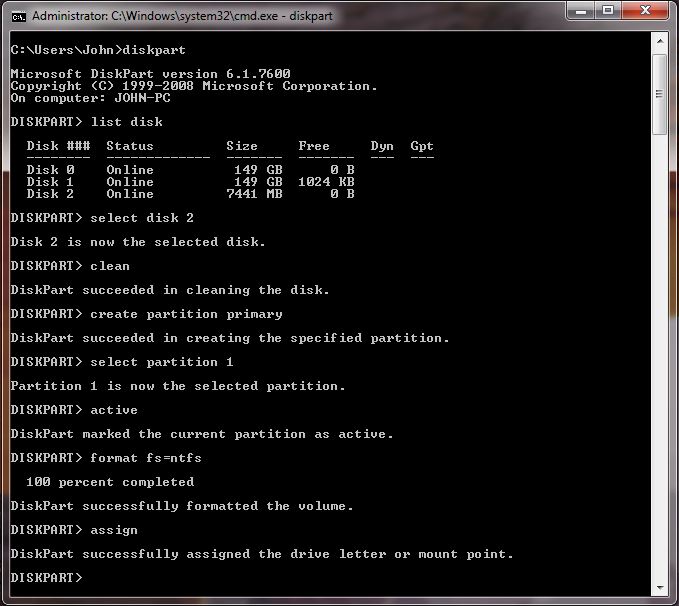How to Make a Bootable USB Flash Drive Using Diskpart
Summary: This article provides instructions on how to create a bootable USB flash drive using the Diskpart utility.
Instructions
Table of Contents:
1. Create a bootable USB flash drive using the Diskpart utility.
A user may want to create a bootable USB flash drive which has a larger partition than the maximum 2 GB created using the Dell Diagnostic Distribution Package (DDDP), see Article How to Create a Bootable USB Flash Drive using Dell Diagnostic Deployment Package (DDDP).
Diskpart can be used to create a partition larger than 2 GB on the USB flash drive so larger files can be used. Diskpart is a Disk Partition utility available within Windows.
Follow the steps in the next section on how to use Diskpart to create a bootable Windows USB flash drive:
2. How to use Diskpart.
-
Insert your USB flash drive (4 GB or larger preferable) into your system.
-
Go to the Command Prompt. Select Start and type
CMDin the search field, right clickCMD.exeand select Run as administrator.
Alternatively, go to Start > All programs > Accessories > right click Command Prompt and select Run as administrator.

-
A User Account Control (UAC) dialog Window may appear. Click Yes to Continue.
-
When the Command Prompt opens, enter the following commands followed by Enter:
-
DISKPART- This starts the utility. -
LIST DISK- This shows the disk number of your USB flash drive. In the image below the USB flash drive shows as Disk 2.

-
SELECT DISK X(ReplaceXwith your USB flash drive number, we are using 2 in this example). -
CLEAN- This wipes the drive. -
CREATE PARTITION PRIMARY- Creates a partition. -
SELECT PARTITION 1- Selects partition 1. -
ACTIVE- Marks the current partition as active. -
FORMAT FS=NTFS QUICK- This formats the partition. -
ASSIGN- Assigns a drive letter. -
EXIT
Insert your Windows DVD into the optical drive.
From Command Prompt, enter the following:
g: (Where "g" is your DVD drive letter)
cd boot (changes to boot directory)
G:\boot bootsect /nt60 d: (Where "d" is your USB drive letter)

Copy all files from the Windows CD to the USB flash drive using xcopy
cd\
G:\xcopy g:\*.* /s/h/f f:\
This copies the Windows installation files onto the USB flash drive, it may take several minutes.
xcopy switches are as follows:/s - Copies directories and subdirectories except empty ones./h - Copies hidden and system files./f - Displays full source and destination filenames while copying.
To display the full list of switches, type xcopy /? <enter>
This makes the USB drive bootable. When selected at startup, it boots straight into the Windows installation.